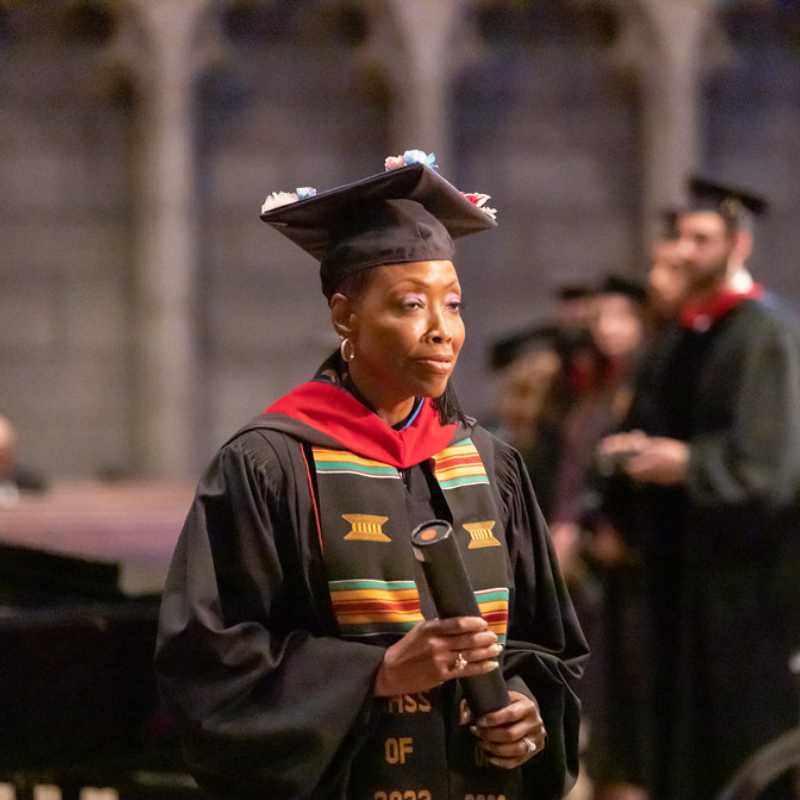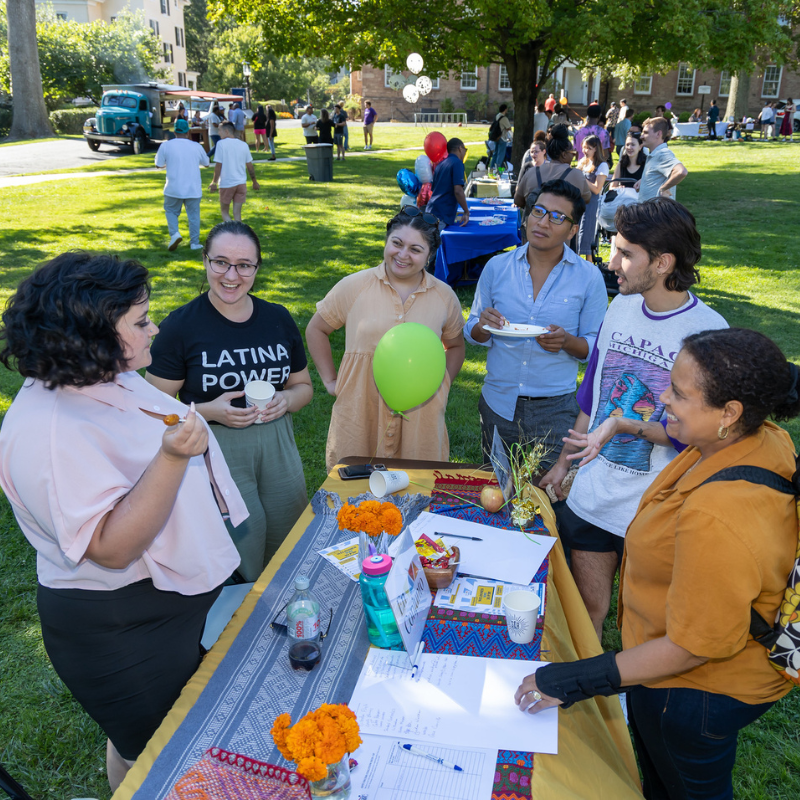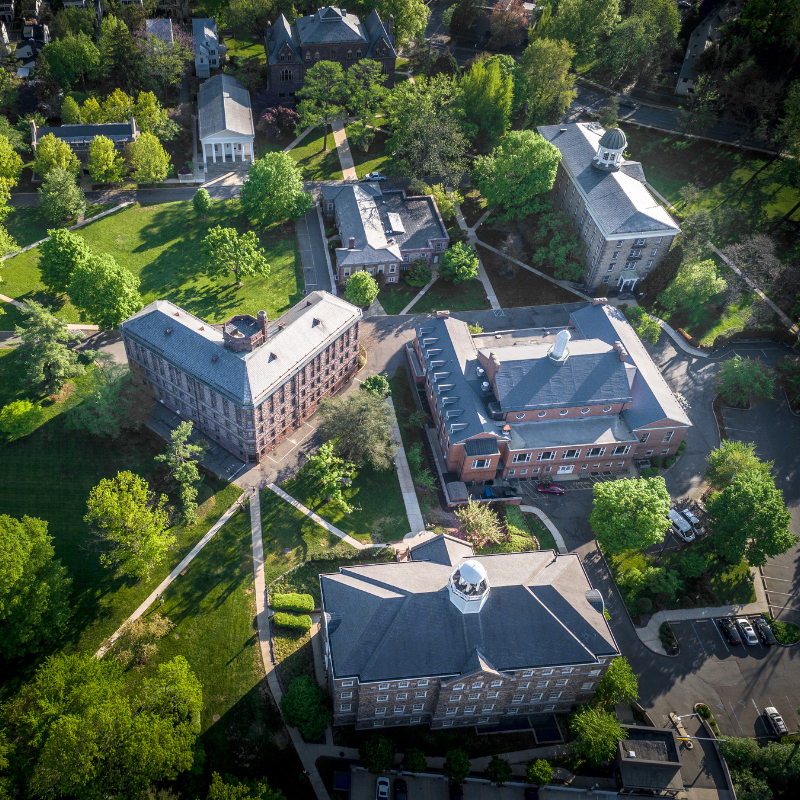Finding Affinity: Bridging Divides in Youth Ministry
January 15, 2019 | Continuing Education, Public, The Thread

the inaugural solo project by hip-hop artist Lauryn Hill, is one of those rare albums—the kind you can listen to all the way through without skipping a track. It’s just that good. Beyond the brilliance of its musicality and much like a good sermon, it’s the potency and authenticity of its soulful delivery that allows it to still resonate so deeply with a new generation of young admirers—both within and beyond the Church—nearly 20 years after its release.
As a member of Generation X, I’ve always viewed Hill as among the best of hip-hop Gen X artistry. As someone whose work emerged during the late 1990s hip-hop era—just as many of us were coming of age—Lauryn Hill is for Xers “one of us.” Even so, one of the most surprising and delightful discoveries I have made as a youth minister is that so many Millennials also share much of the same appreciation and admiration that I have for Hill.
In that sense, Lauryn Hill represents an intergenerational gemstone, a bridge of sorts between two worlds, a place where, ultimately, we can find affinity. Music is like that. It enables connections across divides in ways other things can’t. And, it is the very place where, in youth ministry, we can begin to bridge divides in the church and our world.
From my dual sites as a professor and practitioner in urban youth ministry, I think about the significance of music as a pedagogical resource for teaching across the types of divides that can make it difficult for persons from different generations or different racial/ethnic constituencies to find affinity.
The need to teach against generational divides is becoming an even more critical task in youth ministry, as the vanishing of young people from so many local congregations remains a clear signal that the church appears to be overwhelmingly out of tune with the particular concerns and interests of its youth. Evelyn Parker explores this dynamic of generational divides within the context of the black church. She writes, “The struggle of black youth and their adult affiliates to validate Hip Hop while debating with adults who seek to reject Hip Hop as a viable culture elucidates the contemporary generational divide that needs bridging if the Black Church is to be healthy and wholesome and live out its prophetic mission.”[1]
For Parker, the central generational divide within the black church today is one deeply connected to music. The current challenge not only has implications for the Church’s ability to live out its missional vocation, but also necessitates revising specific practices within black congregations and communities that contribute to the widening chasms between elders and youth in relation to hip-hop music and culture.
But generational divides are only a part of the challenge facing youth ministry. As the racial and class divisions plaguing our nation, including within the Church, become more pronounced, the need to engage youth ministry across lines of difference also assumes particular salience. However, bridging race and class divides within and throughout youth ministry is tough work—it involves some measure of risk. Specifically, it calls youth ministry practitioners to move beyond the confines of our own social locations to engage with others with which we may be either unfamiliar and/or uncomfortable. Ultimately, doing so provides occasions to not only name our differences but to also confront the practices of power and privilege that maintain social inequities in our churches.[2]
Music is an especially valuable resource for teaching against racial and class divisions within youth ministry because all music emerges out of a specific place and at a specific time. Music, no matter the genre, is a way of contextualizing learning experiences and allowing students to become more deliberately attuned to the range of realities taking place in our world, including those realities that tend to be denied or overlooked. For example, hip-hop as one form of music emerges out of the context of marginalized black and brown youth constituencies who use music as a way of igniting resistance to the moral and social ills plaguing their community. By engaging hip-hop within youth ministry, leaders can encourage an acute listening to the lives of these youth whose voices are often ignored or marginalized within the public sphere.
Beyond helping to bridge divides, hip-hop and other forms of music are also providing an avenue within youth ministry for theological formation that has gone largely unnoticed by many in the Church. Recognition of this reality raises a fundamental question: How can youth ministry begin rethinking theological formation in ways that takes more seriously the listening practices young people engage through hip-hop and other forms of music? Exploring the formative potential of these resources means first suspending our judgments about how we expect God to show up in the world.
It was during a youth group lock-in that I first began to witness the potential of popular music forms like hip-hop for theological formation. In a listening session I was leading that night, I asked students to soundtrack significant moments in their lives by identifying artists and sharing songs that best captured the sentiments of those experiences. To encourage a range of selections, I did not limit their choices to “church” songs.
Over and over again, Lauryn Hill kept coming up as an artist who sounded out the aspirations, fears, and concerns of their lives. It didn’t matter that Lauryn Hill’s work emerged in the late 1990s, before many of them even were born, or that we were in church, or that Hill was not a “gospel” artist. It only mattered that Lauryn Hill moved them—in much the same way any deep and abiding encounter with God should.
Beyond Hill, there were a number of other artists and songs, many of them from hip-hop, with which young people also found affinity. As the students shared songs that reflected their lived experiences, we leaders observed that many of their selections were also rife with theological meaning. In that moment, we were witnessing something profoundly spiritual taking place—young people were doing theology, sharing God-talk, and uncovering incarnational realities, mostly on their own.
During our listening session, God showed up in our space in a palpable way. There was a new kind of liturgy emerging, but no less potent than the ones we’d known before. Prayer was easy that night. The music had prepared the way. No prodding and no pushing needed. God never felt closer to these young people that night, as God came to them through a song.
—–
Footnotes:
1. Evelyn L. Parker. “Bridging Civil Rights and Hip Hop Generations.” Black Practical Theology. Dale P. Andrews and Robert London Smith. (Waco, TX: Baylor University Press, 2015), 19-34.
2. Katherine Turpin and Anne Carter Walker. Nurturing Different Dreams: Youth Ministry Across Lines of Difference. (Eugene, OR: Pickwick Publications, 2014).

Tamara Henry serves as Assistant Professor of Religious Education at New York Theological Seminary, where she also directs the Master of Arts in Religious Education and the Master of Arts in Youth Ministry degree programs. An urban youth ministry practitioner for nearly two decades, Dr. Henry also serves as the Minister to Youth for an American Baptist congregation in Brooklyn New York and frequents as an itinerant preacher, speaker and consultant for religious and educational organizations, both locally and across the nation. She received her Ph.D. in Religious Education from Fordham University. Her current research and writing interests explore the intersection between popular music culture, religion and liberative pedagogical practices among youth and young adults.





